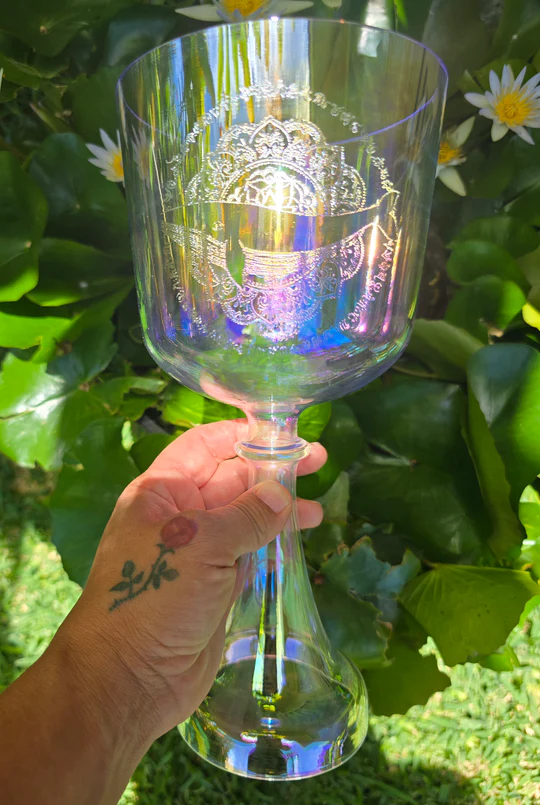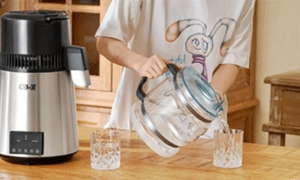Alchemy bowls are much more than beautifully crafted instruments—they are tools for transformation, meditation, and vibrational healing. Often made from quartz crystal infused with precious metals, gemstones, or minerals, these bowls are cherished by sound healers, yoga practitioners, spiritual seekers, and musicians alike. But with so many options on the market, discerning a truly reliable alchemy bowl requires an understanding of its construction, resonance, materials, and craftsmanship. Whether you’re a first-time buyer or expanding an existing collection, this guide will help you make a well-informed decision that aligns with your energetic and aesthetic goals.
Understanding the Fundamentals of Alchemy Bowls
To start your journey toward choosing a reliable alchemy bowl, it’s essential to understand what these instruments are and how they differ from standard crystal singing bowls. Alchemy bowls are typically made from 99.99% pure quartz crystal, into which other materials—such as platinum, gold, silver, ruby, moldavite, or other high-vibration elements—are infused during the manufacturing process. This infusion gives each bowl its unique vibrational signature, tone quality, and healing properties.
Unlike traditional crystal bowls that produce a single note, alchemy bowls can generate harmonics and complex overtones due to the energetic contribution of their infused materials. These sonic characteristics are what make them especially popular in sound healing sessions and meditative environments. However, not all alchemy bowls are created equal. Variations in manufacturing methods, purity, and alignment can significantly impact their reliability, durability, and effectiveness.
Craftsmanship and Manufacturing Integrity
One of the most critical factors in choosing a reliable alchemy bowl is the craftsmanship behind its creation. The most trustworthy bowls are hand-finished and carefully inspected at each stage of production. This is especially important because the process of infusing metals or crystals into quartz requires precision. A poorly crafted bowl may appear beautiful but produce inconsistent tones, carry unbalanced frequencies, or have structural vulnerabilities that reduce its longevity.
Reliable manufacturers pay close attention to both the physical symmetry of the bowl and the vibrational alignment of the materials. A high-quality alchemy bowl should have a uniform thickness throughout, free from air bubbles or visible flaws. Its surface should be smooth, and the bowl should emit a consistent, resonant tone when struck or played with a mallet.
Another sign of quality is how the bowl responds to playing. Reliable alchemy bowls maintain their resonance without wavering, even when the tone is sustained. If the sound drops off prematurely or wobbles excessively, this could be an indication of poor manufacturing or energetic imbalance. Look for makers who have a reputation for precision and who specialize specifically in alchemy bowls, not just general crystal products.
Material Infusion and Energetic Significance
The infusion materials used in alchemy bowls are not only decorative but energetically vital. These additions profoundly influence the bowl’s vibrational tone and the effects it has on the listener or practitioner. For example, a bowl infused with rose quartz may promote emotional healing and heart-centered energy, while one infused with moldavite might encourage spiritual awakening and transformation.
When evaluating a bowl’s reliability, consider both the quality of the infused materials and their energetic compatibility with your intentions. Reputable producers will specify which metals, minerals, or crystals are infused and offer insights into their metaphysical properties. Transparency is key—if a bowl’s composition isn’t clearly stated or seems vague, it may be a red flag.
A truly reliable alchemy bowl doesn’t just contain high-grade materials; it also integrates them in a way that complements the quartz matrix rather than disrupting it. The best bowls exhibit a seamless fusion, resulting in a pure and harmonious sound. It’s worth noting that different combinations can create vastly different sonic and spiritual effects, so consider the infusion blend carefully and how it might align with your practice.
Sound Quality and Frequency Precision
The essence of any alchemy bowl is its sound. A reliable bowl produces not only a beautiful tone but also a precisely tuned frequency that aligns with specific chakras or healing intentions. Many sound healers choose bowls tuned to the 432 Hz or 528 Hz frequencies, believed to resonate more harmoniously with the natural world and human DNA. Others may prefer a traditional Western musical scale (A = 440 Hz) for musical integration.
Each note produced by an alchemy bowl should be clear, sustained, and emotionally resonant. The harmonics—or the subtle, secondary tones that accompany the main note—should feel pleasing rather than jarring. When listening to the bowl, ask yourself whether the sound draws you in or causes subtle discomfort. Reliable alchemy bowls will produce tones that feel grounding, expansive, or emotionally moving—indicators of alignment and coherence.
If possible, test the bowl in a quiet space, or listen to high-fidelity recordings provided by the manufacturer. Reliable sellers often include sound samples or video demonstrations. While sound alone shouldn’t be your only determining factor, it plays a crucial role in assessing the overall reliability and purpose-fit of the bowl.
Trusted Makers and Ethical Considerations
Finally, reliability extends beyond the bowl itself—it also includes the ethics and reputation of its maker. In a growing market where mass production and imitation are common, it’s vital to purchase from trusted artisans or reputable distributors. Authentic alchemy bowls are often handcrafted in small batches, and some are even blessed or energetically charged by spiritual practitioners.
Look for companies that are transparent about their process, origin of materials, and ethical sourcing practices. High-quality alchemy bowls are rarely inexpensive, and for good reason. The cost reflects not just the materials, but the spiritual and artistic integrity of the creator. Beware of vendors offering deeply discounted prices on alchemy bowls that appear to include rare infusions—these may be mass-produced imitations lacking the true energetic and tonal qualities of an authentic piece.
Additionally, a reliable vendor should offer detailed descriptions, certificates of authenticity, and excellent customer support. If you have questions about a bowl’s tone, infusion materials, or care instructions, the company should be responsive and knowledgeable. Some even offer sound consultations to help you find a bowl that harmonizes with your unique energetic blueprint.
Conclusion
Choosing a reliable alchemy bowl is both a practical and intuitive process. These sacred instruments carry frequencies that can profoundly influence physical, emotional, and spiritual well-being. When seeking your ideal bowl, focus on five key aspects: understanding the fundamental differences of alchemy bowls, verifying craftsmanship and construction, evaluating material infusions, assessing sound quality, and selecting a trustworthy maker.
By approaching your search with discernment and awareness, you’ll not only invest in a tool that will last for years—you’ll also invite deeper transformation, harmony, and healing into your life. A truly reliable alchemy bowl is more than a sound instrument; it is a living, resonant bridge between the physical and metaphysical, crafted with care and purpose to support your journey inward and beyond.





























